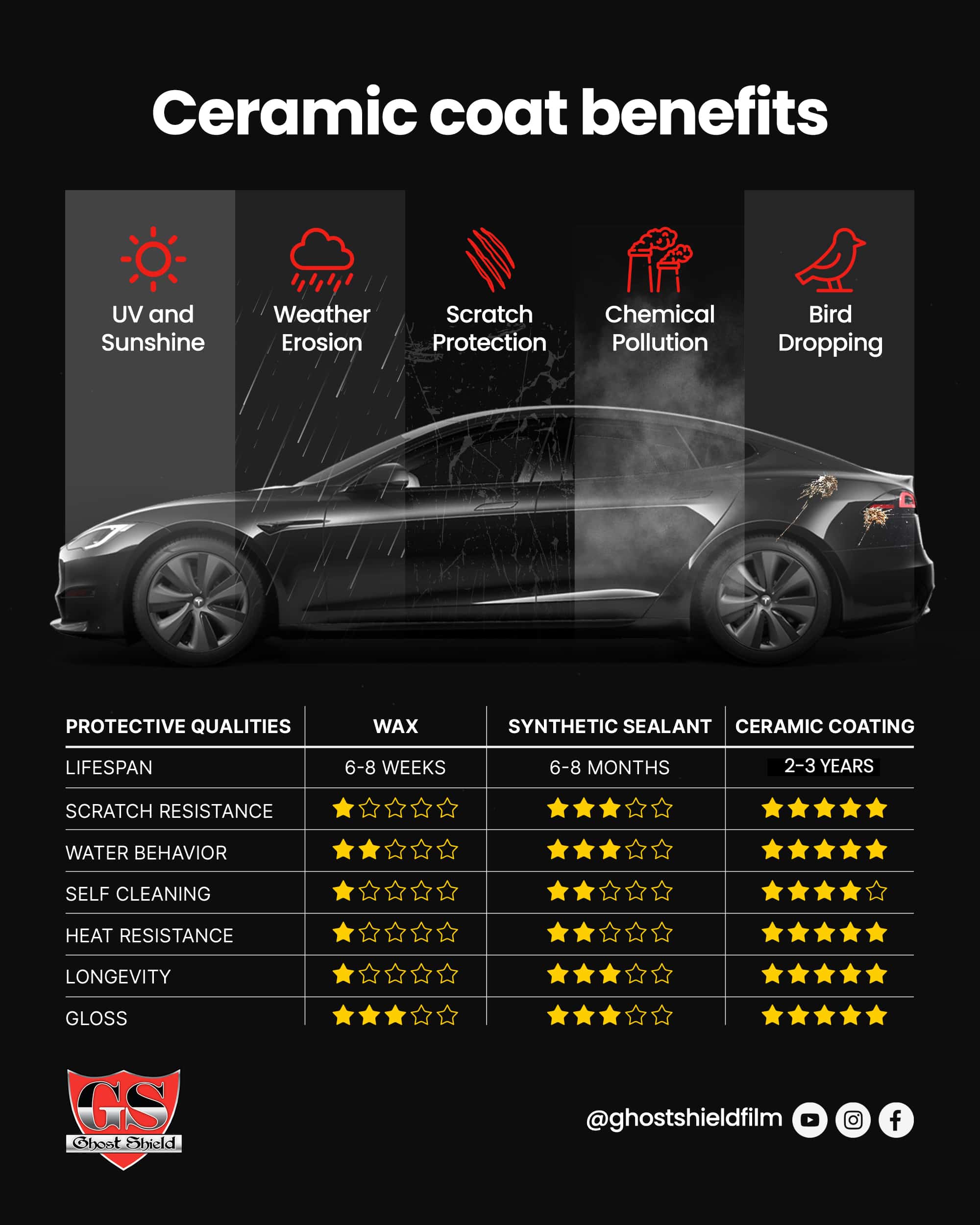The Science Behind the Resilience of Ceramic Coating Philadelphia Applications
Wiki Article
Why Ceramic Finishing Is the Ultimate Service for a Perfect Complete
Ceramic coating has arised as a leading solution for those seeking a remarkable finish for their automobiles, thanks to its amazing sturdiness and safety functions. What variables really established ceramic coating apart?What Is Ceramic Layer?

When applied correctly, ceramic finishing creates a hydrophobic surface area that fends off water and dirt, making it easier to clean and keep. Unlike typical waxes or sealers, which generally provide short-term defense, ceramic finishes can last for several years, relying on the item high quality and application technique. The procedure of applying ceramic finishing requires precise preparation, including complete cleansing and sometimes repaint correction, to guarantee optimal bonding and performance.
Ceramic coverings are not restricted to vehicle surfaces; they can also be used on different products, consisting of glass, metal, and plastics, providing a functional solution for improving security. In general, ceramic finish stands for a significant improvement in surface security technology, integrating both useful and aesthetic advantages for a wide variety of applications.
Advantages of Ceramic Finish
While several surface area security options exist, the benefits of ceramic layer stick out because of its special residential or commercial properties and resilient efficiency. Among the primary advantages is its phenomenal durability. Ceramic Coating Philadelphia. Unlike conventional wax or sealers that need regular reapplication, ceramic finishings supply a resistant layer that can last for several years, significantly minimizing maintenance effortsAnother noteworthy advantage is improved security against ecological pollutants. Ceramic coverings produce a hydrophobic surface that drives away water, dirt, and different pollutants, making it much easier to clean up. This function not only preserves the car's look but also minimizes the threat of corrosion and oxidation, especially in rough climate problems.
In addition, ceramic finishes provide remarkable resistance to UV rays, avoiding fading and destruction of paint over time. This UV security is crucial for keeping the aesthetic worth of vehicles and surfaces exposed to guide sunshine.
Additionally, the shiny surface attained with ceramic covering improves the general aesthetic allure, offering surface areas a showroom-quality shine. In general, ceramic coverings stand for a substantial advancement in surface area protection technology, giving enduring benefits that cater to both visual and useful demands.
How It Functions
Comprehending the science behind ceramic finishes discloses exactly how they give such exceptional security and long life. At its core, a ceramic layer is a liquid polymer that chemically bonds with the vehicle's factory paint.
The application procedure involves several steps, consisting of surface prep work, which is important to attaining ideal bond. Once applied, the covering undertakes a curing procedure, during which it sets and forms a semi-permanent bond with the paint surface area. This bond is what identifies ceramic finishes from standard waxes and sealants, providing a longer-lasting safety obstacle that can endure for many years.
In addition, the thickness of the coating can boost its safety high qualities, ensuring that it can withstand harsh problems. Ultimately, the science of ceramic coverings combines sophisticated products with cutting-edge application strategies to provide an unrivaled degree of defense and visual improvement for lorries.
Comparison With Traditional Techniques
The benefits of ceramic coverings come to be especially obvious when compared to typical paint protection methods such as waxes and sealers. While waxes provide a momentary luster, generally lasting a few weeks to a number of months, ceramic coatings supply a long-lasting protective layer that can endure for a number of years. This sturdiness dramatically decreases the regularity of reapplication, making ceramic coverings a much more affordable remedy over time.In addition, standard approaches frequently require comprehensive prep work and multiple applications to achieve a satisfying level of security. In comparison, ceramic coverings bond at a molecular degree with the vehicle's surface, creating a durable shield against environmental pollutants like UV rays, acid rain, and road salts. This bond improves the automobile's resistance to scrapes and swirl marks, which are widespread with typical waxes and sealers.
Furthermore, the hydrophobic homes of ceramic finishes drive away water and dirt, resulting in easier cleansing and upkeep. On the other hand, wax and sealant-treated surfaces can bring in crud, demanding even more constant washing - Ceramic Coating Philadelphia. In general, ceramic coverings not only provide exceptional protection however also supply a much more enduring and aesthetically attractive surface, developing them as the preferred selection for critical automobile proprietors
Application and Maintenance Tips

Utilizing a foam applicator, apply the covering in small sections, following the producer's guidelines concerning thickness and overlap. Allow enough healing time in between layers, commonly 1 day, to ensure correct bonding. After application, it is important to avoid direct exposure to water or extreme components for at the very least a week to allow the coating to fully cure.
For upkeep, wash the lorry consistently with pH-balanced soaps and avoid unpleasant materials. Touchless vehicle cleans are suggested to lessen scraping. In addition, making use of a ceramic maintenance spray can boost the finishing's hydrophobic properties and long life. Routine assessments for any type of signs of wear will certainly assist maintain the coating's find out this here integrity and maintain that excellent finish.
Conclusion
Finally, ceramic coating emerges as an exceptional choice for achieving a flawless vehicle coating. Its remarkable toughness, protective qualities, and hydrophobic residential properties dramatically enhance the automobile's appearance while simplifying upkeep initiatives. By creating a robust bond with manufacturing facility paint, ceramic finishing efficiently guards versus scratches, UV rays, and environmental pollutants. With a lifespan prolonging several years, this innovative solution not just protects but likewise raises the total visual allure of vehicles, making it a cost-effective investment for automobile lovers.
Report this wiki page